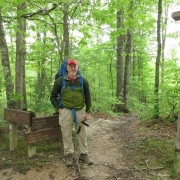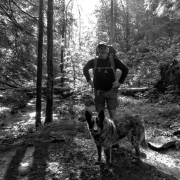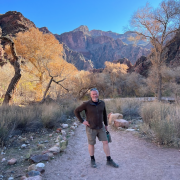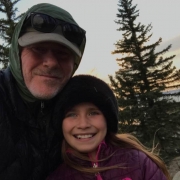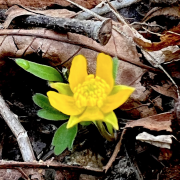Do These Five Things And I Will Predict Your Future! | Healthy Aging Series: Part 14
I’m sick and tired of watching the weather. I have a backpacking trip planed to the Great Smoky Mountains National Park this weekend and they’re predicting rain. An 80% chance of rain. I’m tempted to cancel but I’ve canceled backpacking trips before, when the local meteorologist predicted rain, and I regretted it.
Predicting the weather is one thing, but what about predicting the future? I remember the beginning of the pandemic. I told the clinicians in our agency to do what they could to attend to the needs of their clients, and then I predicted that it would be over in two months. LOL. I missed that prediction by about two years.
What if we could predict your future? I mean really predict your future. What if we could predict whether you aged successfully? There was a study that was completed a few years ago that looked at the possibility of predicting your future. It was called the HUNT study. It was performed in Norway with about 4500 participants, ages 45 to 59, and it lasted over 20 years. Here is the question that the researchers asked:
Are there behaviors that you can do, beginning around mid- life, that can predict whether you age successfully?
Their answer: Yes!
What is “Successful” Aging?
What exactly did they mean by successful aging? They were three criteria:
First, successful aging was defined by the absence of disease. The list of this orders was short. It included serious diseases like heart failure, cancer, stroke, and depression.
Second, it was defined by high cognitive and physical functioning.
The physical criteria generally meant that you could take care of yourself and perform most activities of daily living, to include, showering, dressing, cooking, laundry, shopping, and household task. It was also defined as being able to remember what happened a few days ago.
The third criteria for successful aging was engagement with life. You were engaged with Live if you worked or volunteered in a job or got out of the house at least once a month to do something like going to church, or to a concert, or to a museum.
Notice what’s not mentioned in the definition of successful aging. You can have diabetes, have high blood pressure, use a cane, be a little overweight, be fully retired and not work or volunteer, living solely on Social Security, sitting around the house watching and binging series on Hulu in the evenings, with a vodka martini or just popcorn. The bar is low for successful aging. No general fitness criteria like 18% body fat or being able to bench press your bodyweight. If you are aging successfully, you’re generally healthy, generally able to take care of yourself and you remember what you had for dinner the day before, and generally connected with people in the community. Not a bad prospect for getting older.
What Are the Lifestyle Predictors?
What are the lifestyle predictors for successful aging? Spoiler alert: there are no surprises here.
1. Being a former-smokers or non-smoker.
Notice that if you stopped smoking by middle-age we can predict that you will age successfully. No surprises here. During the height of the pandemic, we were shocked by the number of people that were dying from COVID-19. It was heartbreaking. But before, during, and after the pandemic there were approximately 1300 deaths related to smoking cigarettes every day. Tobacco use accounts for 30% of the incidence of cancer. Smoking cigarettes is one of the major causes of COPD and emphysema. Being a non-smoker or a former smoker is high predictor that you will successfully age.
2. The second predictor is high physical activity. This was defined as exercising one or more times per week and on at least one of these occasions sweating or being out of breath. Again, not a high bar: work out at least two times per week and one of these workouts needs to be more intense. This behavior, along with being a former smoker or non-smoker, were the highest overall predictors for successful aging. Notice, you don’t have to run half marathon‘s, join a spin class, climb 14,000-foot peaks in Colorado, ride your bike across the state of Indiana, be a bodybuilder, or participate in any extreme sport. Just work up a sweat or breathe hard at least one of the two times you exercise each week.
3. The third lifestyle predictor is having a BMI under 30, which put you under the obese criteria. Notice, there is no mention of any particular type of diet. The lifestyle predictor is, manager your weight anyway you can, using whatever diet strategy that suits your personality. My good friend Sam swears by the zone diet. Some people prefer the whole 30 diet or Atkins diet or Paleo or Mediterranean diet or Dash diet. Some people are vegetarian or vegan‘s. I tend to follow what is referred to as time-restricted eating or what some have called intermittent fasting. This lifestyle predictor didn’t monitor for any supplements, or the percentage of macronutrients that you’re taking, or calorie intake. It didn’t even stipulate that you can’t be overweight. Just having a BMI below 30 or below being obese.
4. The fourth lifestyle predictor was low to moderate alcohol consumption. The definition of this predictor was drinking five times or less during the past 14-day period, without excess. Moderate/high consumption meant drinking five or more times in a 14-day period with periods of access during that time. Here is an interesting caveat to this predictor. Regardless of high or low alcohol consumption this behavior played almost no role in predicting successful aging. This is partly because most subjects were moderate to mild drinkers. Having said that, the low drinking status did not predict, by itself, successful aging.
5. Social supports. The definition of social supports in the study meant being connected with others and having significant relationships in your life. The criteria included two factors: Do you feel lonely? And do you have a person in your life that would help support you during an extended illness? The less lonely you felt and feeling that you would receive help when ill were predictors for successful aging.
What are Your Odds of Aging Successfully?
Look at your life and count the predictors.
1. Are you a former smoker or non-smoker?
2. Do you exercise intensely at least one of the two times that you exercise each week?
3. Is your BMI under 30?
4. Are you a mild or moderate drinker?
5. Are you connected to people in the community?
Of these five predictors the one that is most important to have in your life is being a former smoker or non-smoker. This means: if you smoke stop now! All bets are off if you smoke!
In other words, if you are a former smoker or non-smoker, you greatly increase your odds for successful aging. Having all five predictors dramatically improves your chances of successful aging.
If I were a betting man and you had the first predictor (former non-smoker) and at least two or three of the other predictors, my forecast would be clear skies ahead for you!
You cannot predict everything about your future. Will you experience an accident, or exposure to an unexpected virus, or exposure to environmental toxins? No one knows. Those things are out of you control! What things are in your control are the lifestyle predictors that can and will predict your future.
BTW: I postponed my backpacking trip to the next weekend because of the rain chances. I watched my weather app closely that weekend. Not a drop ☺
This is part fourteen in the Healthy Aging Series, written by Mark Neese, LCSW, BCBA. To see more entries in this series, click here.

